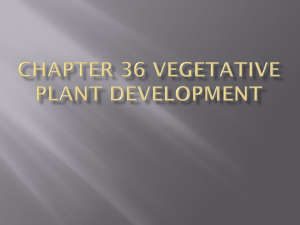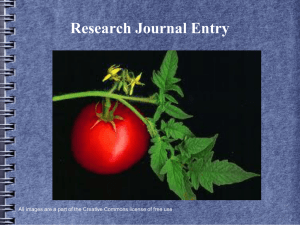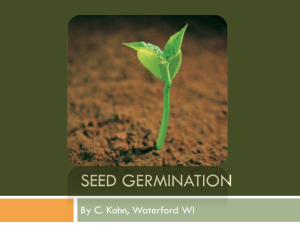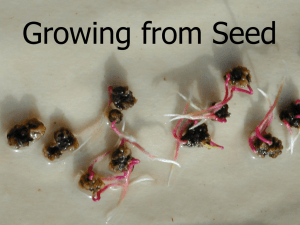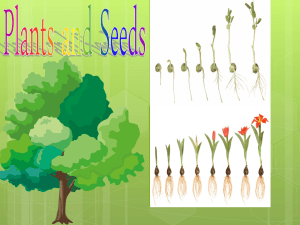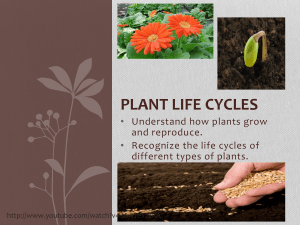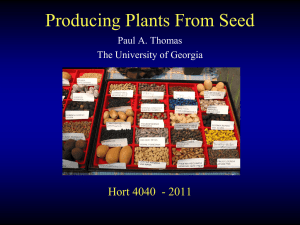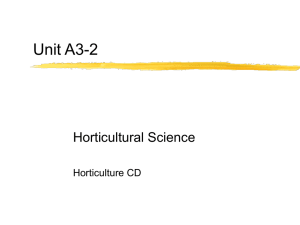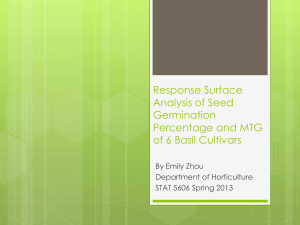Conducting the Warm Germination Test and TZ
advertisement
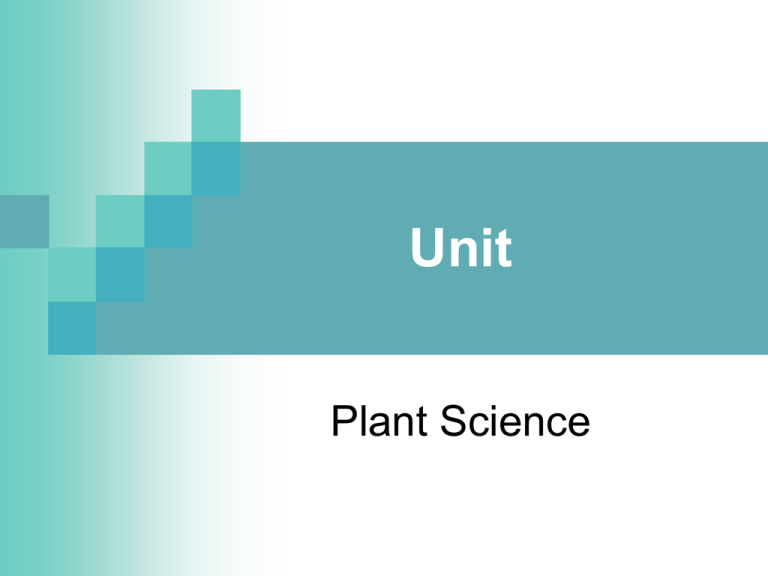
Unit Plant Science Problem Area Initiating Plant Growth Lesson Conducting the Warm Germination Test and TZ Test for Seed Viability Student Learning Objectives 1. Identify the parts of the seed and their role in germination. 2. Describe the stages of seed germination. 3. Understand that moisture, temperature, oxygen, and light affect germination. 4. Explain how and why germination tests are conducted. Terms cold germination test cotyledon embryo endosperm epicotyl hypocotyl imbibition micropyle radicle seed coat seed viability TZ (tetrazolium chloride) test warm germination test What are the parts of the seed and their role in germination? Seeds consist of three primary parts: the seed coat, embryo and food reserves. A. The seed coat is responsible for protecting the seed embryo and allowing or inhibiting the exchange of gas and water. The micropyle is an opening in the seed coat where the sperm entered the ovule prior to fertilization. B. The embryo is an immature plant in an arrested state of development. When conditions for germination are correct the development of the embryo resumes. The epicotyl is the portion of the embryo above the cotyledon(s), or seed leaves. The epicotyl develops into the seedling shoot. Below the cotyledon(s) is the hypocotyl. From the hypocotyl the radicle develops which is the primary root. C. The seed needs food to remain viable during storage. Food is also needed for germination and the development of the embryo into a plant prior to photosynthesis. In grass seeds this food is stored in the endosperm. In legumes and other dicotyledonous plants the food is stored in the cotyledons. What are the steps in the seed germination process? There are three steps in the germination process that take place simultaneously. A. Imbibition is the intake of water. It is the first step in the germination process. When the seed takes up water through the seed coat, cells begin to divide. Water content rises from 5–10% to 30–40% as mitosis begins. The intake of water is also associated with an increase in respiration. B. Increased metabolic rate is the second process in germination. This increase in metabolic activity requires that the large starch and protein molecules stored in the endosperm or cotyledons must be broken down for use by the embryo. An enzyme, amylase, converts starch to sugar. C. The enlargement of the embryo is the third process. Once the starch and protein molecules are broken down they are then used to accelerate the development of the embryo. As this occurs the embryo increases in size causing the seed coat to rupture. The radicle emerges from the seed followed by the emergence of the shoot. How do environmental factors affect germination? A. Moisture is necessary for the germination of seeds. Moisture is responsible for the mobilization of food reserves and for the increase in respiration in the embryo. B. Correct temperature is needed for optimum germination. As with many biological processes the rate of germination is affected by temperature. It is important to understand that soil temperature, not air temperature, is the key for optimum germination. C. Oxygen is needed for seeds to respire. Respiration is the process of oxygen combining with glucose to provide energy. Without energy the development of the embryo will not occur. D. The presence or absence of light affects germination. Some plants require light to germinate, while others need darkness. Why are germination tests conducted? A. Seed viability, the presence of a live embryo, is tested under ideal germination conditions using a warm germination test. For most crop species the warm test usually lasts 7 days with the seeds being held at 77 º F with 100% humidity. Seeds are usually tested on a paper towel-like material. If the seed is considered viable it should germinate at a rate of at least 90%. The warm test is limited in that typical planting conditions do not include 77 º F soil temperatures, or 100% humidity. B. Cold germination tests predict how seed will perform when planted under normal planting conditions. The cold germination test involves holding the seeds at 50 º F for seven days followed by 77 º F for three days. Soil from the field that contains natural microorganisms is used and only seeds that emerge are counted. This test indicates the seed lot’s vigor or ability to withstand less than desirable conditions. C. The TZ(tetrazolium chloride) test identifies seeds that are viable. The seeds are first soaked in water to initiate germination. They are then split in half and put into a 1% TZ solution. The TZ is changed to a red or deep pink chemical called formazan when it comes into contact with enzymes found only in live seeds. The degree of redness is indicative on the viability of the seed. Review/Summary What are the parts of the seed and their role in germination? What are the steps in the seed germination process? How do environmental factors affect germination? Why are germination tests conducted?
